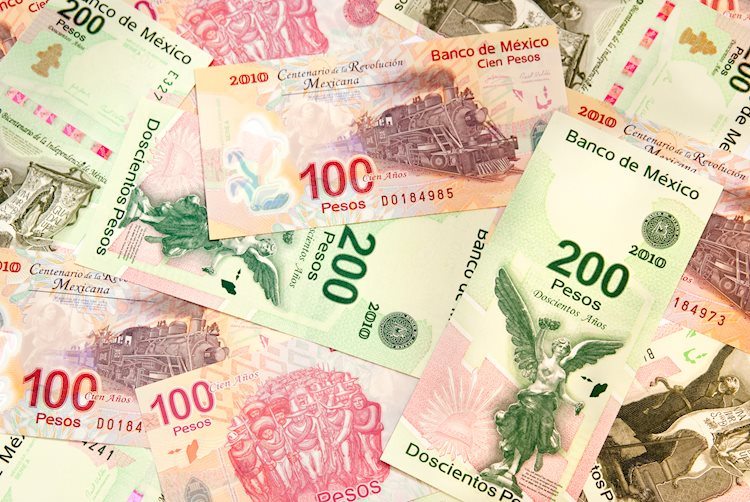- Mexican Peso plunges over 1.51% as Dollar Index hits four-month high, fueled by Trump policy expectations.
- Banxico likely to cut rates by 25 bps, with core inflation nearing target, adding pressure on Peso.
- Mexico’s Consumer Confidence improves, while Banxico decision and US inflation data to shape USD/MXN trend.
The Mexican Peso depreciates at the beginning of the week against the US Dollar as the latter refreshes four-month highs, according to the US Dollar Index (DXY). Investor angst concerning a second Trump presidency and protectionists policies underpins the American currency, which is set to rise further. The USD/MXN trades at 20.46, gaining over 1.51%.
Risk appetite remains strong with Wall Street posting solid gains, which usually underpins risk-sensitive currencies like the Peso. Nevertheless, rumors of Robert Lighthizer’s appointment to lead US trade policy sparked fears among investors. Lighthizer was a major supporter of Trump’s Chinese tariffs during his first term.
Consequently, the DXY, which tracks the performance of the American currency against another six, has risen by 0.54% to 105.51.
In the meantime, Mexico’s economic docket revealed that Consumer Confidence in October improved. At the same time, Industrial Production figures were mixed ahead of the Bank of Mexico (Banxico) monetary policy decision.
Banxico is projected to lower borrowing costs by 25 basis points following last week’s inflation data, which witnessed core inflation dipping from 3.91% to 3.80% YoY, closing in on the 3% goal.
Earlier, Mexican President Claudia Sheinbaum said that she would renew an agreement with food producers and retailers to keep prices of basic groceries affordable for consumers, according to Reuters.
Ahead this week, Mexico’s schedule will feature the Banxico policy decision. On the US front, Fed speakers, inflation on the consumer and producer sides and Retail Sales will dictate the US Dollar’s path moving forward.
Daily digest market movers: Mexican Peso collapses amid risk-on sentiment
- October’s Consumer Confidence in Mexico improved from 47.4 to 49.4.
- Industrial Production for September increased by 0.6% MoM vs. -0.5% contraction in August. In the 12 months to September, it shrank by -0.4%, the same as the previous month.
- On November 7, Mexico’s Economy Secretary, Marcelo Ebrard, commented that most of Mexico’s imports from China are made by around 50 companies and most of them are American. “Putting a tariff on those imports will only put those companies in danger, starting with the automotive industry,” Ebrard said.
- Minneapolis Fed President Neel Kashkari said, “We want to have confidence that inflation is going to go all the way back down to our 2% target.” He added that if growth and productivity remain strong, the Fed may not cut as much.
- Data from the Chicago Board of Trade, via the December fed funds rate futures contract, shows investors estimate 24 bps of Fed easing by the end of 2024.
USD/MXN technical outlook: Mexican Peso tumbles again as USD/MXN rises above 20.00
The USD/MXN uptrend remains in place, though buyers might encounter some stir resistance ahead. Despite hitting a daily peak of 20.57, bulls failed to challenge the year-to-date (YTD) high at 20.80. Once cleared, the next stop would be 20.82, followed by the 21.00 mark, ahead of March 8, 2022, peak at 21.46.
Conversely, sellers must regain the 20.00 figure, if they would like to challenge the 50-day Simple Moving Average (SMA) at 19.70. On additional weakness, the USD/MXN next support would be the psychological figure at 19.50, followed by the October 14 low of 19.23.
Banxico FAQs
The Bank of Mexico, also known as Banxico, is the country’s central bank. Its mission is to preserve the value of Mexico’s currency, the Mexican Peso (MXN), and to set the monetary policy. To this end, its main objective is to maintain low and stable inflation within target levels – at or close to its target of 3%, the midpoint in a tolerance band of between 2% and 4%.
The main tool of the Banxico to guide monetary policy is by setting interest rates. When inflation is above target, the bank will attempt to tame it by raising rates, making it more expensive for households and businesses to borrow money and thus cooling the economy. Higher interest rates are generally positive for the Mexican Peso (MXN) as they lead to higher yields, making the country a more attractive place for investors. On the contrary, lower interest rates tend to weaken MXN. The rate differential with the USD, or how the Banxico is expected to set interest rates compared with the US Federal Reserve (Fed), is a key factor.
Banxico meets eight times a year, and its monetary policy is greatly influenced by decisions of the US Federal Reserve (Fed). Therefore, the central bank’s decision-making committee usually gathers a week after the Fed. In doing so, Banxico reacts and sometimes anticipates monetary policy measures set by the Federal Reserve. For example, after the Covid-19 pandemic, before the Fed raised rates, Banxico did it first in an attempt to diminish the chances of a substantial depreciation of the Mexican Peso (MXN) and to prevent capital outflows that could destabilize the country.
Read the full article here

